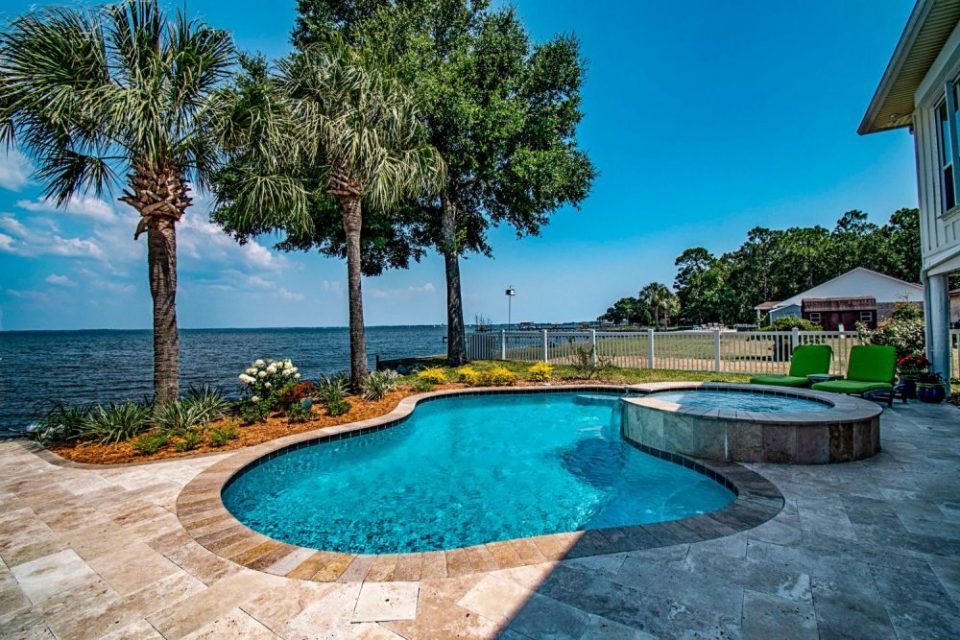A leak in a gunite pool can feel like a perplexing puzzle. The source may be hidden, causing frustration and uncertainty. However, with the right approach and effective techniques, you can successfully find and fix a leak in your gunite pool. In this article, we will unravel the mystery of pool leaks and guide you through the process of locating leaks in gunite pools, allowing you to restore your pool's integrity and enjoy worry-free swimming.
Recognizing the Signs of a Pool Leak
Before diving into leak detection methods, it's important to be familiar with the signs that may indicate a pool leak. Look out for unexplained water loss, constantly running pool pumps, soggy areas around the pool, or cracks in the pool structure. These clues can help narrow down the location of the leak and set you on the right path to finding it.
Conducting a Visual Inspection
Begin your quest for the elusive pool leak with a thorough visual inspection. Examine the pool shell, tiles, fittings, and surrounding areas for any visible signs of damage, such as cracks, gaps, or loose components. Pay close attention to areas where leaks commonly occur, such as around skimmers, return jets, lights, and the pool's waterline. Though not all leaks are visible, this inspection may provide valuable clues about potential leak sources.
Performing a Bucket Test
The bucket test is a simple yet effective method for measuring water loss in your gunite pool. Fill a bucket with water and place it on the pool step or bench, ensuring it is immersed to the same water level as the pool. Mark the water level inside the bucket and on the pool's waterline. After 24 to 48 hours, compare the water loss in the bucket to the water loss in the pool. If the pool's water level drops significantly more than the bucket's level, it indicates a probable leak.
Utilizing Dye Testing
Dye testing is a valuable technique for identifying surface leaks in gunite pools. With the pool pump turned off, add a few drops of dye or a leak detection dye near suspected leak areas, such as cracks, fittings, or skimmers. Observe if the dye is drawn into the leak, indicating its location. This method helps narrow down the source of the leak, making repairs more targeted and effective.
Pressure Testing
Pressure testing is a more advanced method that involves pressurizing the plumbing lines of your gunite pool to detect leaks. By isolating different sections of the plumbing system and applying pressure, you can systematically identify the area where the pressure drops, indicating a leak. It is advisable to seek assistance from a professional or consult your pool manufacturer's guidelines to ensure accurate pressure testing procedures.
Seeking Professional Assistance
If your efforts to locate the leak prove challenging or if you prefer expert assistance, don't hesitate to contact a pool professional specializing in leak detection. These professionals have the knowledge, experience, and specialized equipment, such as electronic leak detectors, infrared cameras, or acoustic sensors, to accurately identify leaks in gunite pools. Their expertise can save you time, prevent unnecessary damage, and ensure efficient repairs.
Fixing the Leak
Once the leak is successfully located, it's time to address it. The repair method will depend on the size and location of the leak. Small cracks in the gunite shell can often be repaired with epoxy or waterproof sealants. For more significant leaks or plumbing-related issues, it is recommended to consult a professional pool repair company. They can assess the situation and perform the necessary repairs to restore the integrity of your gunite pool.
Conclusion
Solving the puzzle of a pool leak in a gunite pool requires a systematic approach and a combination of visual inspection, bucket testing, dye testing, pressure testing, and potentially seeking professional assistance. By employing these effective techniques, you can successfully locate and fix leaks, ensuring the longevity and functionality of your pool. Remember, prompt detection and timely repairs are essential to prevent further damage and to enjoy your gunite pool to the fullest.


No comments yet